#c.1520
Text
Bust of whom?
I recently watched this podcast from Harvart Art Museum. I believe it is nice that they managed to atribute it finally to Pietro Torrigiano and prove it is 16th century original. However, I believe they are wrong in thinking it could be Mary Rose.
youtube
They went with Mr Mathews’ ‘reidentification’ of Sittow’s portrait as Mary Rose and with letter from 1510 where Margaret of Austria asked the sculptor to fix the bust of Mary Rose because the neck has broken-and this one is broken it that place. But plenty of Torrigiano’s bust could have broken in that place, because it is the bust’s weakest point.
But they are correct that there is some resemblence to this portrait:

That shape of mouth is very like Catherine of Aragon, and overall face in some aspects resembles her-but it isn’t her imo. Obviously the nose and eyes are different shape. Though nose tip is kind of similiar.
My conclusion? It’s probably Catherine of Aragon’s relative form Netherlands. Probably her niece. But which?!

Let’s be honest-in all portraits their lips are fuller than this. But not always the portraits can capture the features that well, due to unflatering angles etc, and sometimes the artist struggled to capture the features well.
In portraits and in sculptures.
Based upon nose you’d say it should be Mary of Austria, because she had nicest nose. But if the size of lips could be downplayed, so could be the nose.
Which means it could be any of the sisters.
The deal breaker here is the fashion. It’s c.1520(hence long after that letter):

But it has split front of the gown-which in netherlands was not fashionable since c.1505. Big contradiction right? Well, it’s logical actually, because this is probably not mainstream netherlandish fashion.
It’s style of Isabella of Austria:

She as Queen of Denmark, Norway and Sweden, kept to netherlandish fashion to great degree.(While her sisters abandoned it for foreign styles.) But weather in Denmark is colded than in Netherlands and she was forced to adapt for it.
If you look back to the bust’s details-the gown is lined with fur, the kirtle is lined with fur, plus much thicker chemise/parlet(we can’t tell).
I am not saying the bust is good likeness on her features, but you can see some of that resenblence in eyes and nose.

Obviously the mourning headwear would lead you believe it could be Margaret, but since there is pretty good resemblence to Catherine, I doubt it. (Though of course due to them being related it is not 100% impossible.)
In 1519 twin boys of Isabella have died and her grandfather died also, so she would certainly have reason to go to mourning around 1520. Imo it is Isabella.
Alternatively, it could be Margaret of Austria or Isabella’s sisters Eleanor or Mary (but after they have since abandoned netherlandish fashion) or their mother Juana of Castile not from life(in Netherlandish fashion of much later than start of her imprisoment) or not very good likeness of Catherine of Aragon herself.
When Charles V visited England in 1520, perhaps she could have worn netherlandish fashion and had bust made to comemorate the occasion. However-it’d have to be poor likeness in eyes and nose. Nose perhaps could change with health issues and age. Eyes-nope.
And I have no explanation as to why she’d wear mourning headwear at the time.
Unless she sent the bust to Charles V as gesture of defiance as Henry VII was preparing to meet French in Field Cloth of Gold-as sign of her not agreeing with being friendly to French and mourning such decision.
We know she was strongly against French, but this would mean actively trying to sabotage the meeting. Would that fit her character? It’d certainly not fall into obedient wife cathegory.
Tell me what you think. Bad likeness of Catherine of Aragon’s niece or bad likeness of Catherine herself?
#Netherladish fashion#c.1520#sculpture#habsburgs#or ultimate sabotage of Cloth of Field of Gold by Catherine of Aragon?
16 notes
·
View notes
Text

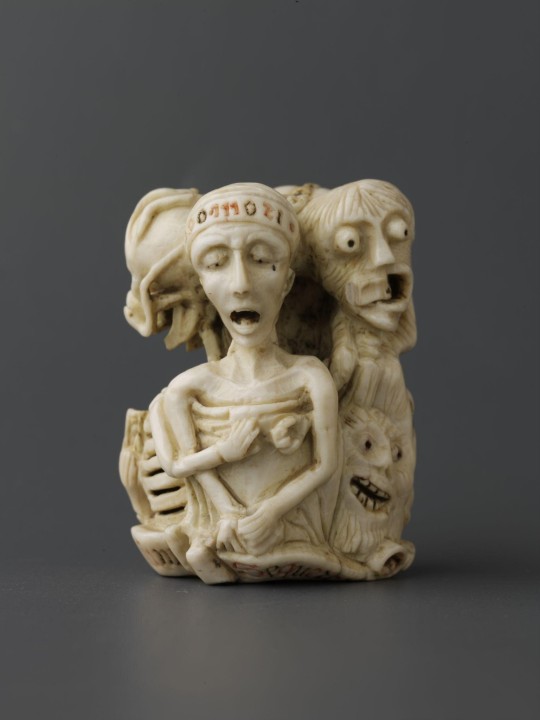


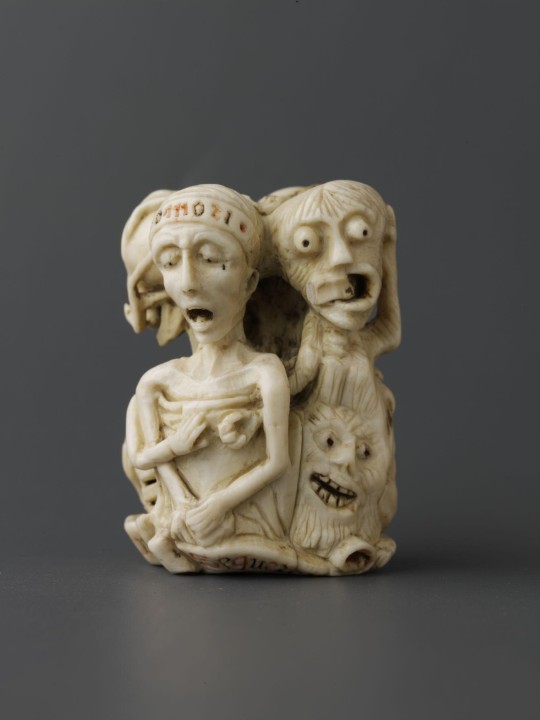
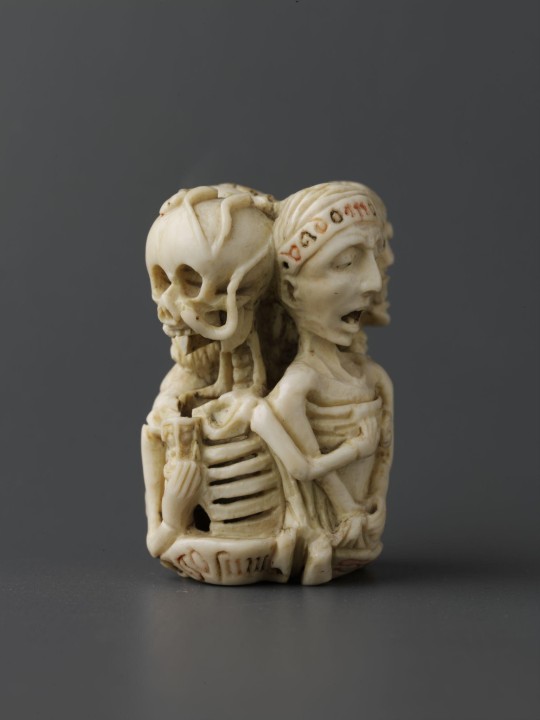
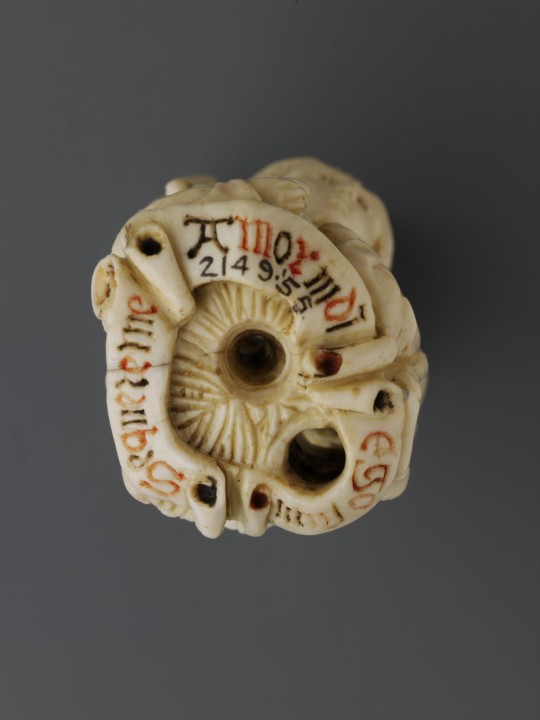
~ Rosary Bead. Pendant, memento mori from a chaplet or rosary.
Date: ca. 1520-1530
Medium: Carved elephant ivory with traces of red and black paint.
2K notes
·
View notes
Text

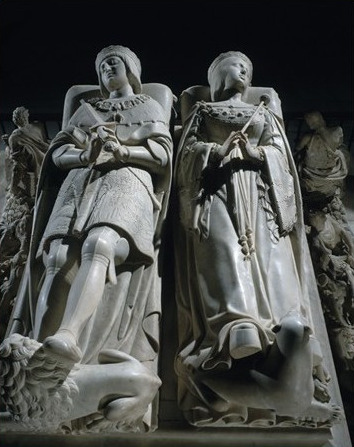


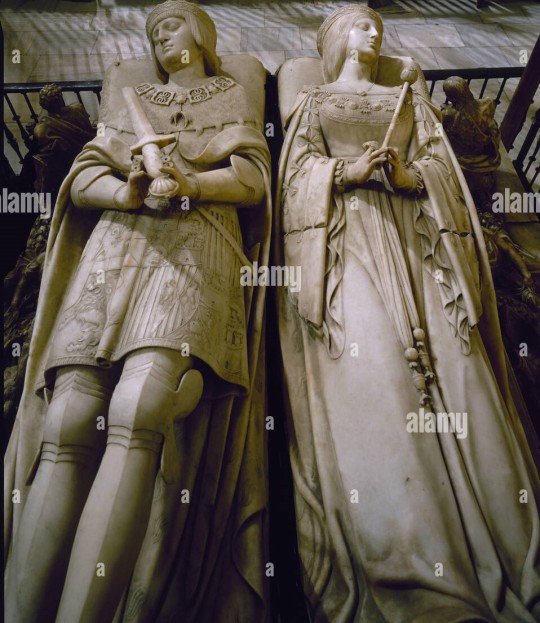


Tombs of Joanna I, Queen of Castile and Philip the Handsome by Bartolome Ordonez, 1519-1520
#bartolome ordonez#spain#Castile#sovereign#tomb#effigy#16th century#mdpsculpture#16th c. sculpture#1510s#1519#16th c. spain#1520#castille
215 notes
·
View notes
Text
since I'm only watching the serials that I really want to I've skipped ahead to mark of the rani and I must ask. what in the everloving hell is peri wearing
#it's not 1810s. at least. it takes inspiration from it but it's really not 1810s#her bodice really seems more 1520s menswear. slash and puffed and the texture too#I just checked when this serial would be set and it's c. 1814. her bodice's main colour at least is accurate if a fashion plate is#to be believed. but like. her waistline is too low those sleeves are. again it's really 1520s slash and puff#it's not inaccurate in its shapes but it seems to be a hodgepodge of various styles and I don't think I'm seeing anything that looks like i#in full#hell I've just stumbled across a fashion plate that looks VERY similar to what peri wears and it's so different!#skirt shape is different (though if this were the 1820s it would be more accurate) sleeves are different for daywear no bonnet#her skirt's too short and those heels. not only would those heels be evil for running in the early 19th century favoured a flatter shoe
4 notes
·
View notes
Text

3 notes
·
View notes
Text




strangely shaped roots
in a book of medicinal plants, bavaria, c. 1520-1530
source: Munich, BSB, Cod.icon. 26, fol. 18v, 15v, 46v and 60v
#none of these are mandrakes#16th century#herbal#medicinal plants#roots#plants#illuminated manuscript
923 notes
·
View notes
Photo
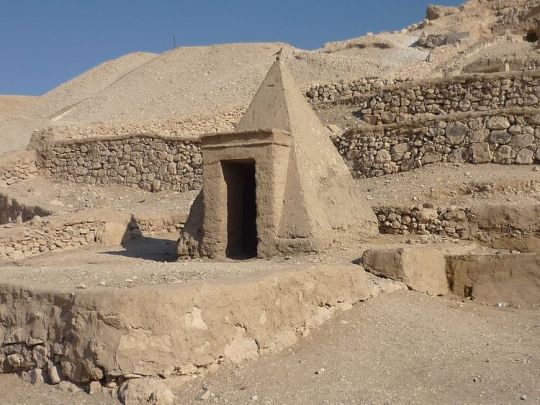
Deir el-Medina
Deir el-Medina is the modern Arabic name for the worker's village (now an archaeological site) which was home to the artisans and craftsmen of Thebes who built and decorated the royal tombs in the nearby Valley of the Kings and Valley of the Queens.
The ancient inhabitants called the village Pa Demi (“the village”) but it was referred to in official correspondence as Set-Ma'at (“The Place of Truth”) because the workers there were thought to be inspired by the gods in creating the eternal homes of the deceased kings and their families. Early in the Christian era the village, then deserted, was occupied by monks who took over the Temple of Hathor for use as a cloister. The temple was referred to as Deir el-Medina (“Monastery of the Town”) and this name finally came to be applied to the entire site.
Unlike most villages in ancient Egypt, which grew up organically from small settlements, Deir el-Medina was a planned community. It was founded by Amenhotep I (c.1541-1520 BCE) specifically to house workers on royal tombs because tomb desecration and robbery had become a serious concern by his time. It was decided that the royalty of Egypt would no longer advertise their final resting places with large monuments but, instead, would be buried in a less accessible area in tombs cut into the cliff walls. These areas would become the necropolises now known as the Valley of the Kings and the Valley of the Queens and those who lived in the village were known as “Servants in the Place of Truth” for their important role in creating eternal homes and also remaining discreet regarding tomb contents and location.
Deir el-Medina is among the most important archaeological sites in Egypt because of the wealth of information it provides on the daily life of the people who lived there. Serious excavation at the site was begun in 1905 CE by the Italian archaeologist Ernesto Schiaparelli and furthered by a number of others throughout the 20th century CE with some of the most extensive work done by French archaeologist Bernard Bruyere between 1922-1940 CE. At the same time Howard Carter was bringing the treasures of the royalty to light from Tutankhamun's tomb, Bruyere was uncovering the lives of the working people who would have created that final resting place.
History of the Village
The earliest extant ruins at the site are from the reign of Thutmose I (1520-1492 BCE), son and successor of Amenhotep I, but there is no doubt that it was Amenhotep I who first planned the site. He and his mother, Ahmose-Nefertari, were worshipped as protective gods at the site throughout its history. The workers also venerated the cobra goddess Meretseger (whose name means “She Who Loves Silence”), the personification of the Theban necropolis and protector of the dead and, especially, of their tombs.
By the time of the New Kingdom (c.1570-c.1069 BCE) tomb robbing had become almost epidemic in scope. Although measures such as false doors and labyrinths had been a part of tomb building since the Old Kingdom (c.2613-2181 BCE) they were not effective in keeping robbers from reaching the burial chamber and the vast treasures left there with the deceased. One gains an understanding of exactly how great the wealth in these tombs was when one considers the treasures of Tutankhamun's tomb discovered by Howard Carter in 1922 CE. Tutankhamun died before he was 20 years old and had not yet amassed the kind of wealth a king like Djoser (c.2670 BCE) or Khufu (2589-2566 BCE) would have had entombed for the afterlife.
The Valley of the Kings was selected as the new necropolis for royalty and the village was planned for easy access (a half hour's walk) from a worker's home to the tombs. The village was in continuous use from the time of Thutmose I until the collapse of the New Kingdom in c. 1069 BCE. Although the community and nearby necropolises were planned to safeguard the tombs of the kings, human greed and opportunity would eventually work to undermine the plan and some of the workers themselves would turn to robbing the tombs they had helped build and protect for an easy and quite substantial payoff. For most of its history, however, the village seems to have functioned as it was intended.
Continue reading...
151 notes
·
View notes
Text


What a beauty. This 1840 Creole Cottage in New Orleans, Louisiana was a 2 family that was converted to a single family. 3bds, 3ba, $465K.


This is lovely- 1 large sitting room with 2 fireplaces, b/c they took the walls down and left the fireplaces. So pretty.

Love the way they finished the stairs and left the exposed brick. The floor looks original, but if it's not, it was very cool of them to choose wide planks.

The perfect reading nook. Also great for doing needle work, studying, or even fitting it with a small desk.
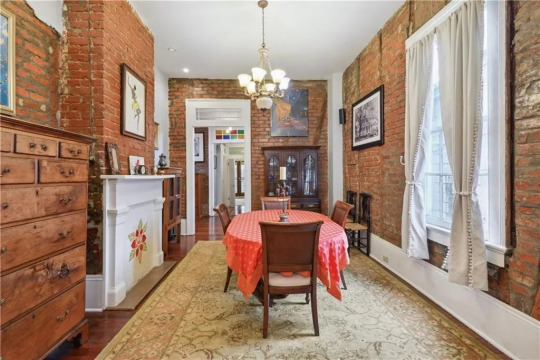
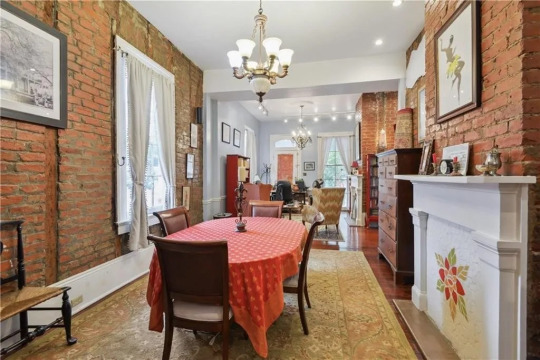
Great dining room. The old brick walls with the vertical joints are fabulous. Another fireplace, too. Like what they did to it- they kept it even though it's not functional- the stencil is a great idea.


Brand new large kitchen. Love the backsplash and white cabinets.

Cute little counter or bar.

They made a small powder room with a space-saving pocket door.

This area is currently a home office.

This bedroom is a good size, b/c NOLA homes aren't known for large bedrooms. Double doors open to the deck.

They usually have small baths, too, so they made a nice shower room in here.

Stackable laundry fits in a closet.

The primary bedroom is very large. It has a beautiful fireplace.

Plus a small office area. Look at how they cut the writing table to fit into the window.


When they took the wall down to make the room larger, the other side became a sitting area for the primary and it also has a fireplace.

In addition, it has an en-suite with a vintage tub.


The yard has decking surrounded by beautiful gardens.

And, look at this- It's like being on vacation.
250 notes
·
View notes
Text
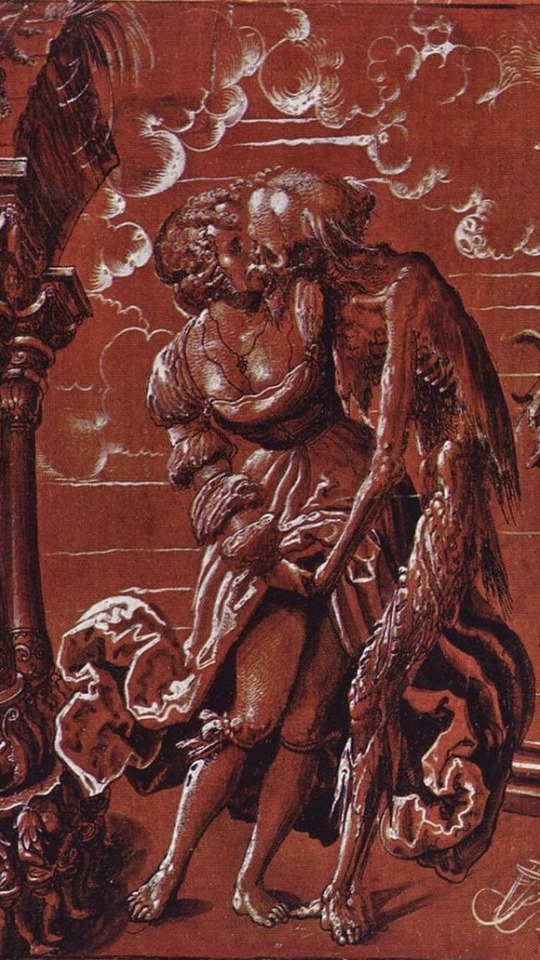

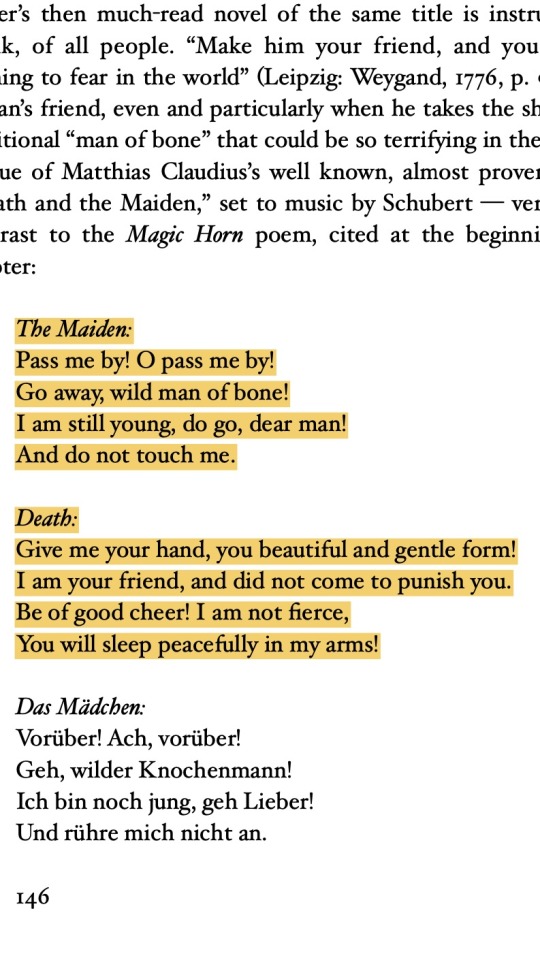
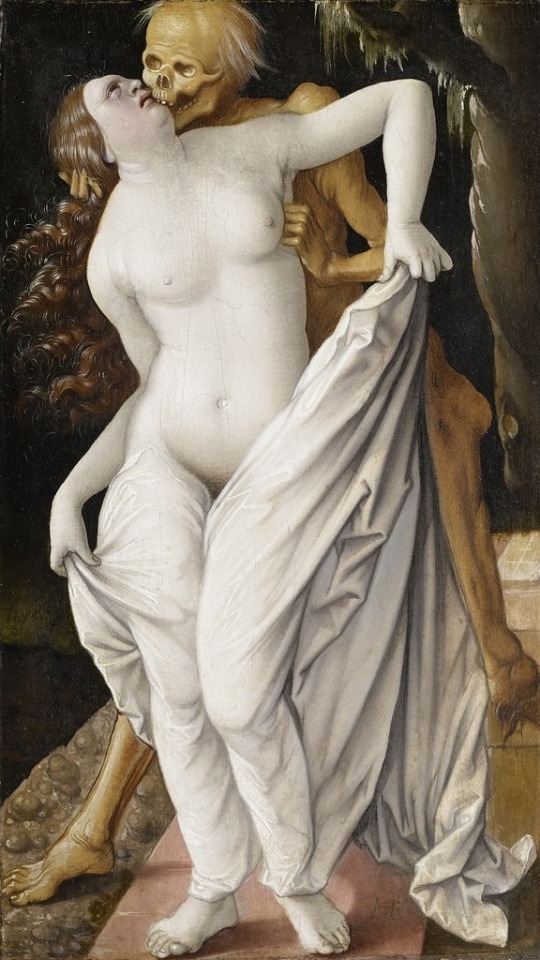
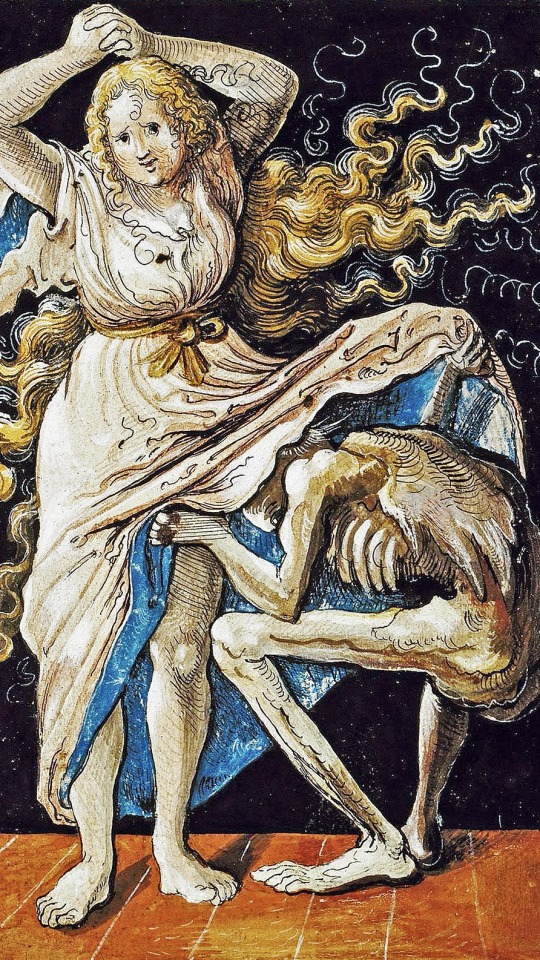
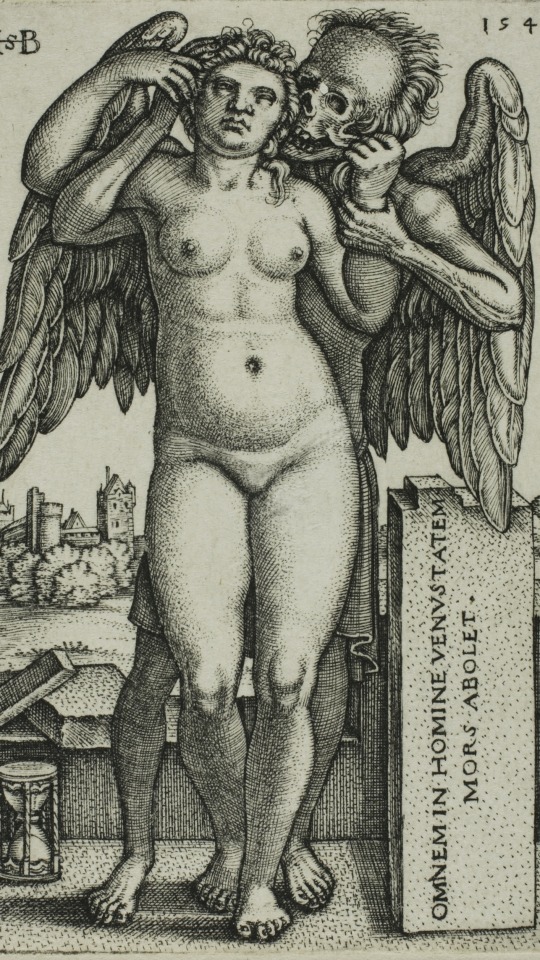
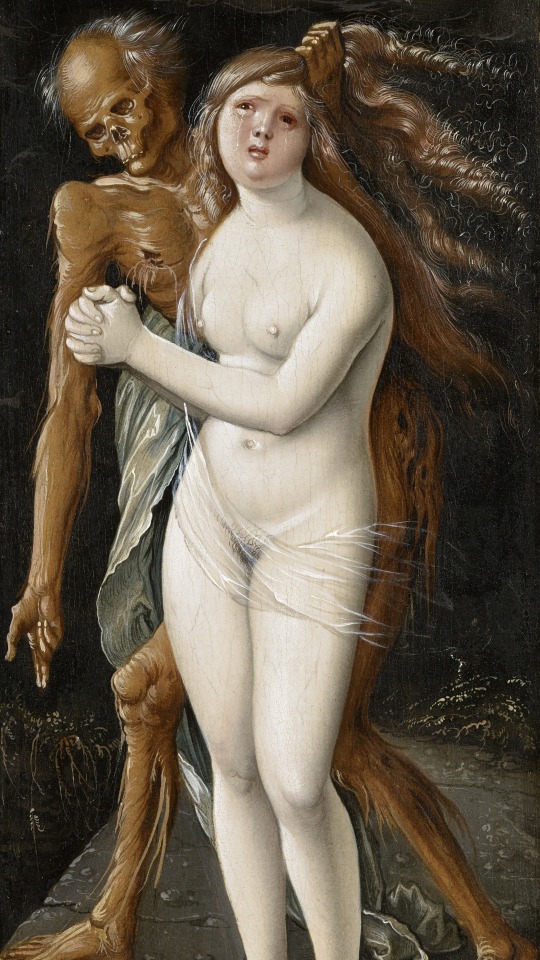
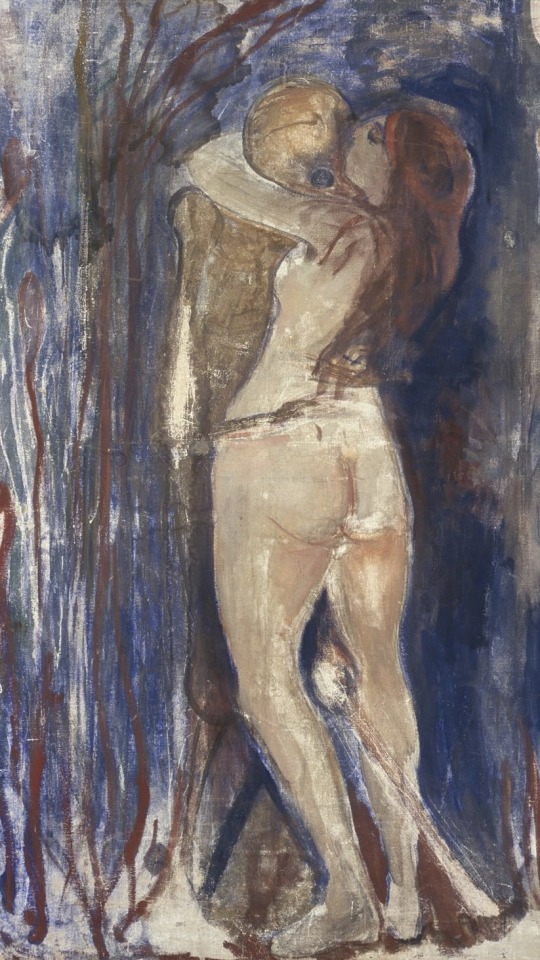
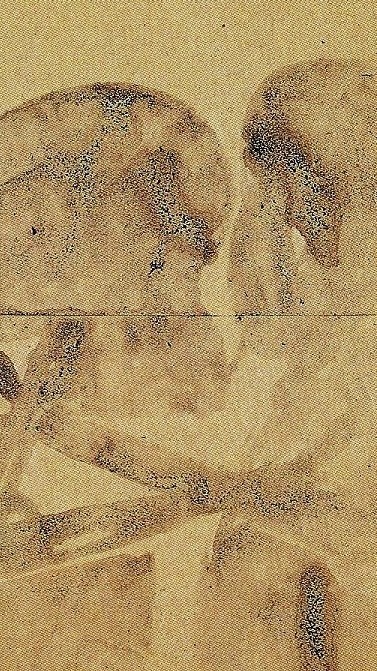
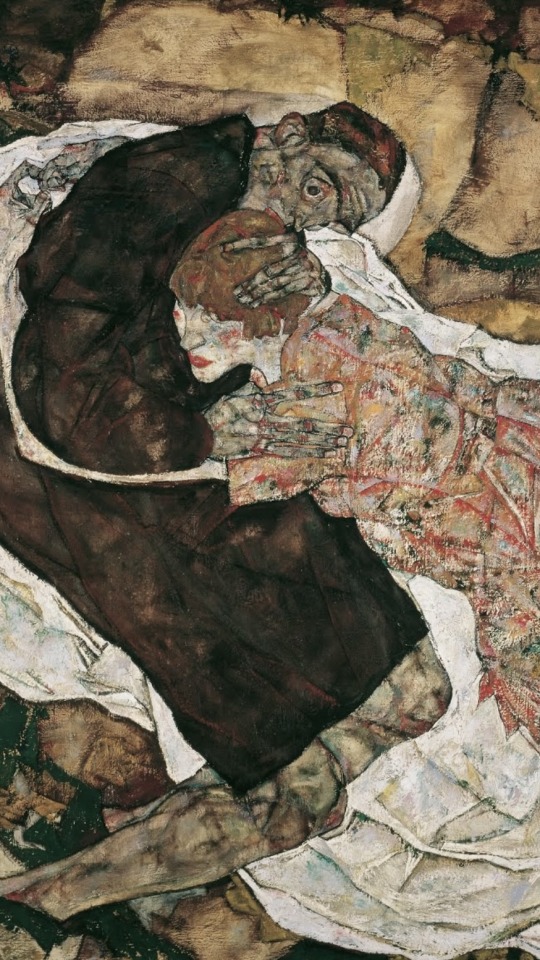
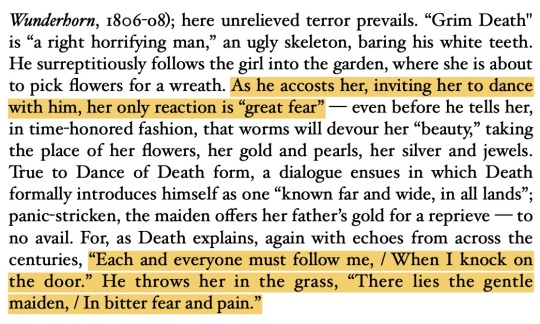
death and the maiden
niklaus manuel deutsch c. 1517, richard bergh 1888, matthias claudius c. 1774, hans baldung grien c. 1520—25, niklaus manuel deutsch c. 1517, hans sebald beham c. 1547, hans baldung grien c. 1517, edvard munch c. 1893—94, joseph beuys 1957, egon schiele c. 1915—16, karl siegfried guthke 1999
401 notes
·
View notes
Text
i didn't get a minor in art history for no reason, so let's talk about
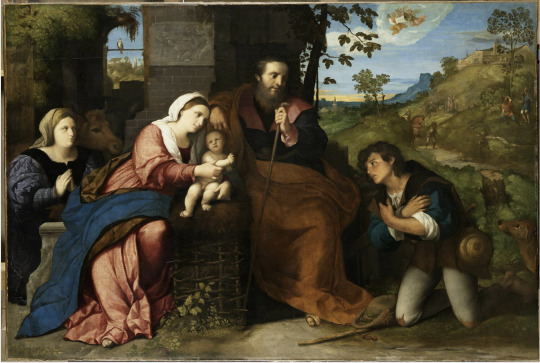
The Adoration of the Shepherds with a Donor by Palma Vecchio, c. 1520-1525 (held at the Louvre under the French name L'Adoration des bergers avec une donatrice, here's its collection details)
What's fascinating about this painting (done in the very very late High Renaissance to early Mannerism) is that the identity of the commissioner of the painting is the one kneeling to the far right, who Armand in the episode says is modeled by him, is actually unknown. (So that makes it very handy for the show to claim it's Armand without actually being inaccurate or anachronistic)
What this depicts is the Christmas story (though yes, I know, it doesn't look like Christmastime in the painting) where the shepherds pay Jesus a visit after he's born. There's a lark sitting in the window on the left, which often symbolizes rebirth, and there's a dog all the way to the very right, which usually symbolizes loyalty.
Of course, within the IWTV verse, the choice of using this painting (which doesn't have much, if any literature on it by itself--maybe because for a long time it was attributed to the painter Titian by mistake instead of Vecchio) is extremely fascinating to me. There's a lot of dimensions here: most notably, as another user I saw pointed out, Armand was the model for this, and the painter (Marius de Romanus in the show, Armand's maker) whitewashes Armand. Now, Armand is immortalized in room 711 in the Louvre forever as a 20 year old, looking nothing like himself, his identity effectively completely erased, while thousands of people pass and see this painting every year.
It raises a lot of poignant questions, also: since the commissioner of real life (who is the real life model) doesn't exist in IWTV, what is the motivation for Marius to paint Armand in a Christ scene? Because obviously, Armand would not have commissioned this painting. What spurs him to do that? Since the real life artist, Vecchio, was very influenced by Titian at the point when this painting was made, was Marius also? I really do want to know the team's thought process behind choosing this painting, because it's endlessly interesting to me. It's definitely one of the lesser known works in the Louvre, even just a cursory glance over JSTOR barely has any information. I might literally email my art history professors and ask if they have any material on this or Vecchio because I'm so intrigued... anyone else wanna discuss <3?
85 notes
·
View notes
Text

Unknown Artist
Martyrdom of St. Denis of Paris
Carved wood relief, polychrome painted and gilded, 93 x 90 cm, Southern Germany, c. 1520
69 notes
·
View notes
Photo

The Vestal Virgin Tuccia
Giovanni Battista Moroni (c.1520–1525–1578)
The National Gallery, London
792 notes
·
View notes
Text

“Magdalen Reading” c.1500–1520, Piero di Cosimo (1462–1522)
#art#bookblr#bookish#book quotes#books#quotes#bookstagram#booktok#book tumblr#reading#book club#book lover#bibliophile#bookworm#book worm#readers of tumblr#booklr#book community#reading aesthetic#reader aesthetic#bookshelves
54 notes
·
View notes
Text

Detail from ‘Saint James the Great and the Virgin and Child’ by Michel Sittow, c. 1520.
#art details#vintage art#classic art#art#painting#art history#old art#vintage#oil painting#moody art#art detail#michel sittow#flower painting
279 notes
·
View notes
Text

“Portrait of Prospero Alessandri”, c.1560 by Giovanni Battista Moroni (1520–1578). Italian Mannerist painter. Harvard Art Museums. oil on canvas
130 notes
·
View notes
